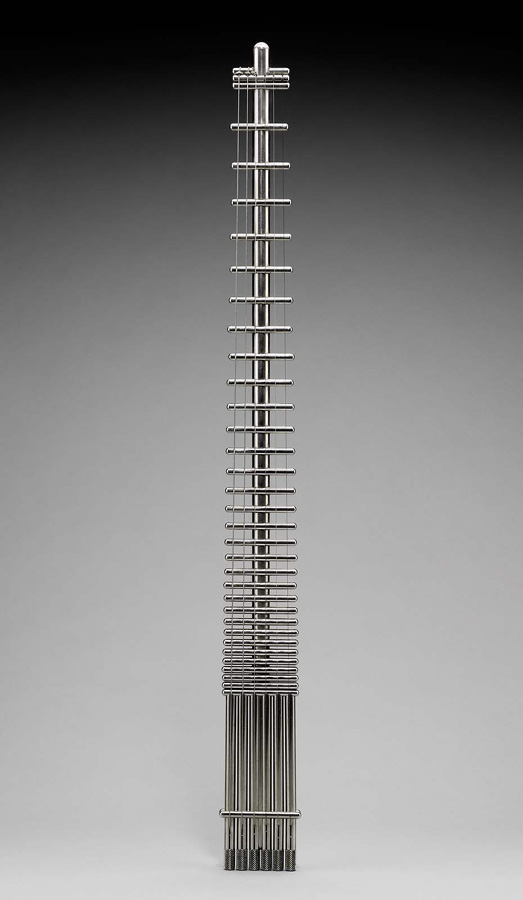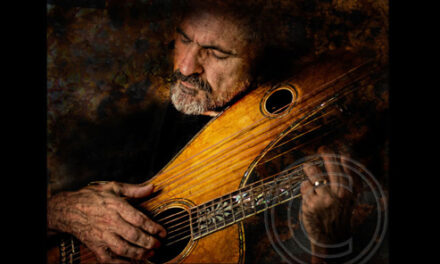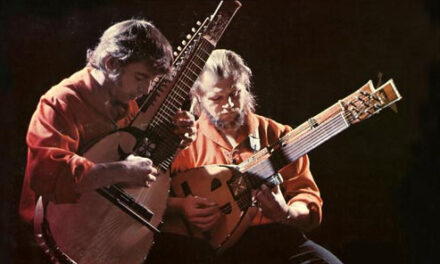Boston Day 4-6
Last night, the American Musical Instrument Society conference got off to a great start with instrument demonstrations at the MFA, and now I’m going to cover the remainder of the event.
As most of the AMIS papers for Thursday appeared to be well over my head and outside my field, I took Steve and Frank up on their offer for a tour of old Boston. We’d start with the infamous Duck Boats!

Surprisingly, I was not aware of this ubiquitous sightseeing attraction (several companies vying for tourist dollars). These DUKW vehicles were originally built by GMC in WWII to transport troops and supplies over both land and water. After the war, they were ingeniously put to new use for tours around Boston and the inner harbor (today, all are better, modern reproductions). We drew the pink polka-dotted model.

The first hour was spent on land – here’s the late 1800’s Boston Public Library

The driver/guide pointed out various historic landmarks, as well as famous locations such as the outdoor setting for Boston Legal (we miss our Denny Crane)
The beautiful Trinity Church

We’re goin’ in!

The transition from one completely different form of locomotion and steering to another was pretty fascinating!

Here’s how the unusual “tour bus” sits in the water. Cool, no? We’re now on the Charles River.

After a thirty-minute water tour of the city, we had another land jaunt past many landmarks (the Common, Public Garden, Bunker Hill, etc.). I thoroughly enjoyed it!

While eating at an outdoor restaurant, we spotted these guys setting up. Going over to listen a bit, I was quite impressed with the jazz harp. (It’s harder than you think, and in my experience, the majority of so-called jazz harpists are more “prepared, jazzy style” players.) Young Berklee student Charles Overton was the real deal, and a real nice guy. I didn’t recognize the names of his two original Virginia harp teachers, but he recognized mine (JoAnn Turovsky) and was even planning to come out and study with her! Watch out for this guy (and remember to send me your first CD, Charles!).

We strolled again past the church, Steve pointing out its mirror reflection in the adjacent skyscraper

You saw the duck boats, here are the swan boats, a well-known attraction in the Public Garden
It was getting late, so time to head back to the Silvas and pack up (Steve would ship my Merrill home).
Saying goodbye to my harp guitar friends Steve and Frank, Steve dropped me off at the dorms, where I duly checked in and got settled (private bathroom!). I then spent the evening with old and new friends at the AMIS reception, entertained by Irish musicians who led group dancing. Hey, you know me – I would have certainly joined in and made a spectacular fool of myself, but was having an issue that would turn out to be a horrific, long-growing bone spur that has been doing a number on my Achilles tendon ever since our mountain hike last year in Idaho (and many more since). I’m trying an unusual PRP (platelet-rich plasma) injection treatment this week.

The next day (Friday, June 5th), we split up into several field trips. I chose the visit to the home of long-time AMIS member, obsessive collector (hey, he admits it!) Marlowe Sigal. His late 1800’s home (and wife’s gardens) was incredible, in no small part in having been designed and built around a two-story pipe organ in the center hall/entryway. What a find for an antique keyboard collector! There was also a large dedicated music room, filled with harpsichords and pianofortes, but Marlowe has hundreds. So they fill other rooms and the entire basement, with racks of disassemble square pianos. Running (obviously) out of room, he has since turned to woodwinds, with an impressive collection as well. He had local flute and harpsichord historical music virtuosos attend the day to demonstrate many of the instruments. I can’t imagine keeping that many fussy antique keyboards in tune, but he does. I wish I could show you some amazing pictures – you’ll just have to make due (like I am now) with the brand new book (above) of his collection, cataloged by expert (and past AMIS president) Al Rice. Al curated the former Claremont College instrument collection (now in Phoenix) and is the fellow who convinced me to join AMIS (to which I remain forever grateful!).
I spent dinner alone, continuing to finesse my paper for tomorrow, then took a stroll through the Fenway Parkway (not the baseball park) to return to the museum for that night’s concert.

A flock…no, a virtual army, of Canadian geese have apparently taken up residence

They’re clearly accustomed to being fed (insistent, really), and drag their babies along with them for the irresistibly cute, sympathy ploy. You know they know what they’re doing.

Friday night’s museum concert was an unusual performance by So Percussion. I can appreciate the Steve Reich and John Cage stuff up to a point, but frankly am more of a “Stomp” and Blue Man Group guy. I liked the last piece “Music for Wood and Strings” by Bryce Dessner, as it utilized these custom-built percussively-played dulcimer-like string instruments, amplified and with four banks each. The bass version with frets was pretty cool.
The next morning was our final day of the event, and a full day of papers, beginning with brasswind instruments.
(Again, I thank Aurelia Hartenberger, Susan Thompson, and Jayson Dobney for many of these photos)

A three-segment String Instruments panel followed, started off by (Harvard grad student) Diane Oliva’s “Toward a History of Walking-Stick Violins.” Playing the museum’s example, she amply demonstrated her main point that previous romantically-inclined scholars “falsely overstate the practicality of this instrument while severely understating its novelty.” I like her!

Third in the line-up was the irrepressible Matthew Hill, whose Ph.D. thesis “George Beauchamp and the Rise of the Electric Guitar up to 1939” I hope you get to read someday. His paper was “The Gittler Guitar: Two Faces of Musical Instrument Minimalism.”

Not too unsurprisingly, I was completely unaware of Gittler. Police fans know it from the 1983 “Synchronicity II” video, where Andy Summers (having ordered one immediately) plays surprisingly bad air guitar with it.
Again, playing the museum’s two examples of the two important Gittler designs, Matt taught me everything I had never known about the instrument and its inventor. The original experiment was to strip away everything on a guitar that was not absolutely essential, reducing it to the most minimal elements physically possible. And it worked!

Sandwiched between these two, I presented some historical and musical perspective of the MFA’s three iconic harp guitars – a Gibson, Dyer and Mozzani. You remember me getting these tuned up on the preceding Tuesday.

Remember how the high E string kept slipping off the side of the fingerboard due to the shifted bridge? Remember the intonation issue? Then you can imagine this performance. At least it looked nice.
I played the Dyer next and ended with the exquisite Mozzani. Oh, and I owe you an answer about the mysterious hole in the top! Have you all written down your guesses?
Here are some quick photos I took:

The circular wood patch is deliberate and may well be original. Inside the opening is a clock key mechanism.

This is for inserting the key to tighten an ingenious leg support into the player’s precise performing position.

The support from the back (note the instrument’s beautifully carved back from top to bottom). But wait, there’s more!

Inserted into the empty endpin hole is a second brace that is held by weight and swings freely.
We believe that these are original to the instrument, each made of wood and covered with some padding and fabric, hand-stitched closed. The case of this all-original instrument, by the way, is where Darcy found the important Mozzani “Chitarra Lyra Instruction booklet” – kindly copied and shared with us by Darcy and archived in the Harpguitars.net Members Section.

The end result is the most comfortable, ergonomic guitar playing position I’ve ever (never!) imagined!
Note that I’m sitting up straight with both feet flat on the ground and the body is perfectly centered high in my lap at a perfect 45-degree angle (my preference). Of course, this is a small instrument – it wouldn’t work well with anything larger.

We heard more interesting papers throughout the remainder of the day and I snuck around the museum a bit. The evening ended with our final dinner banquet, where I sat and had pleasant conversation with two AMIS guitar friends, David Thomas and hurdy-gurdy specialist Bob Green.
And so we come to an end of the third phase of my Harp Guitar Working Vacation…but not the end of the working vacation. I had one more stop to make and it would be a lulu!






